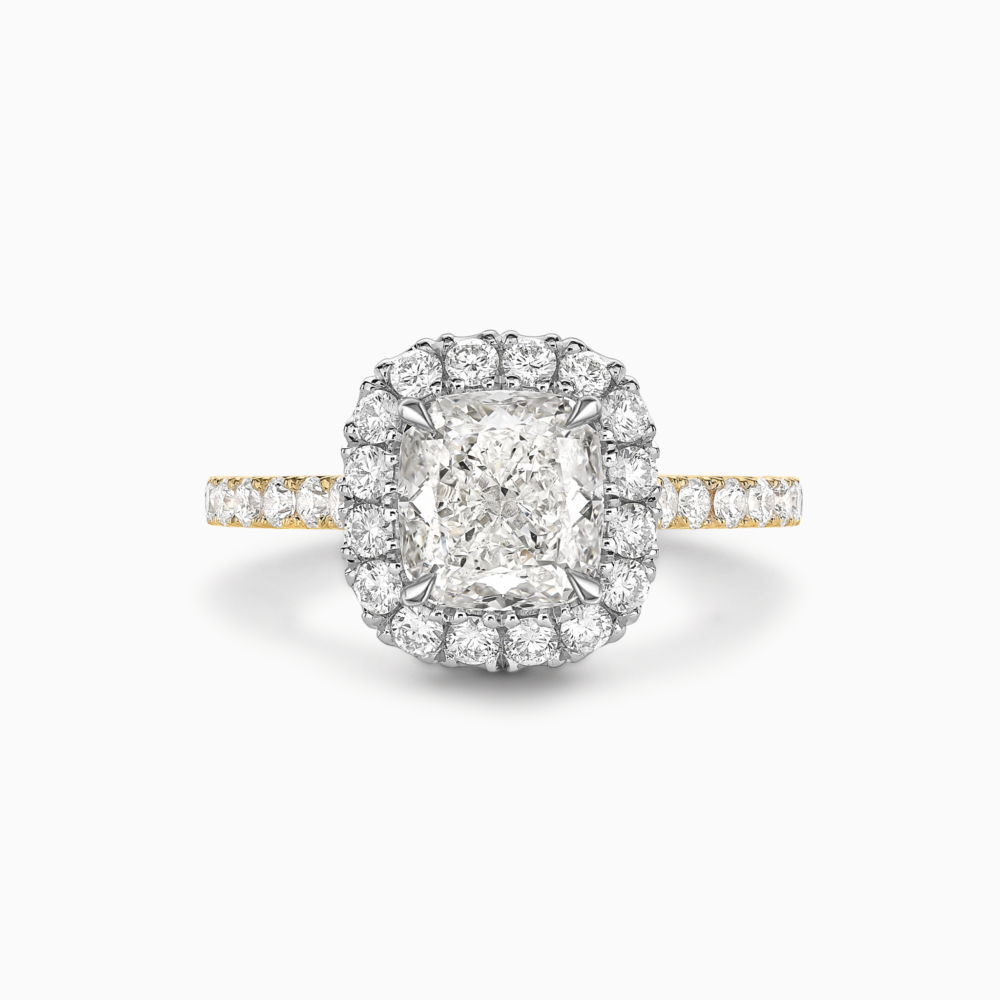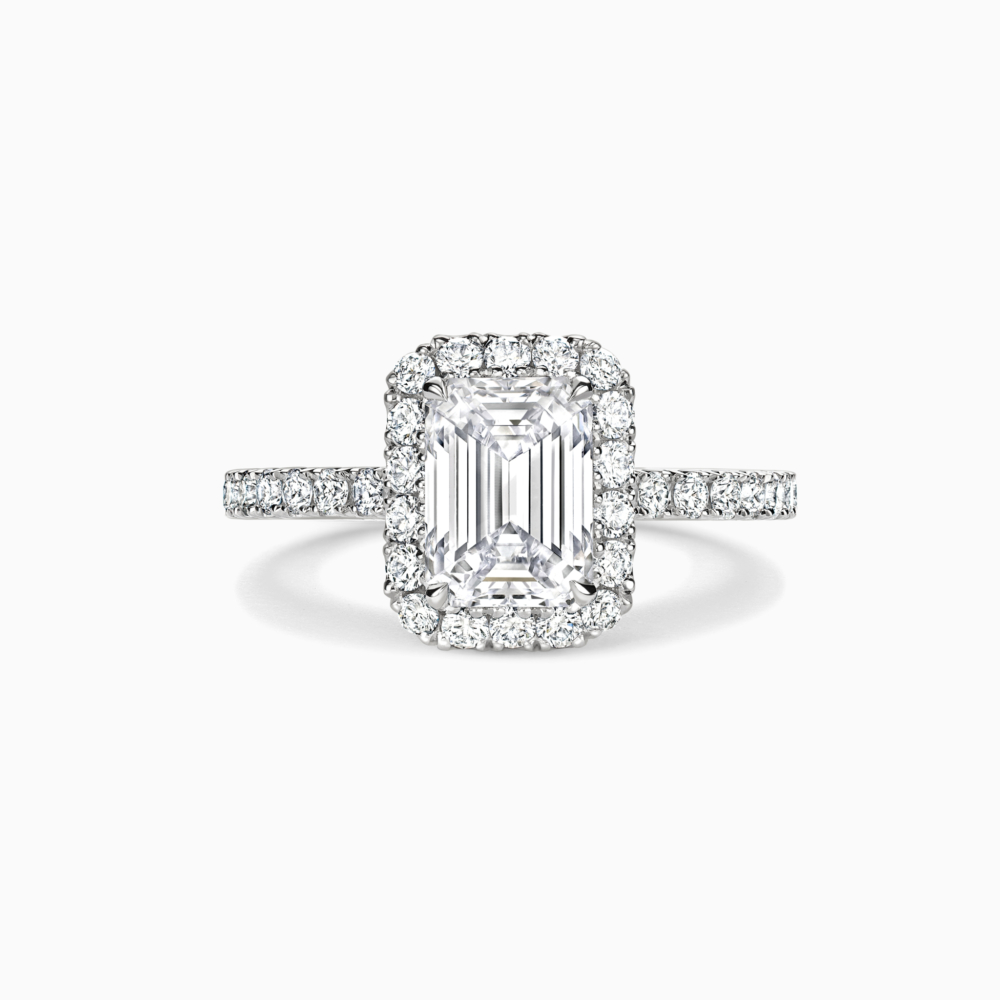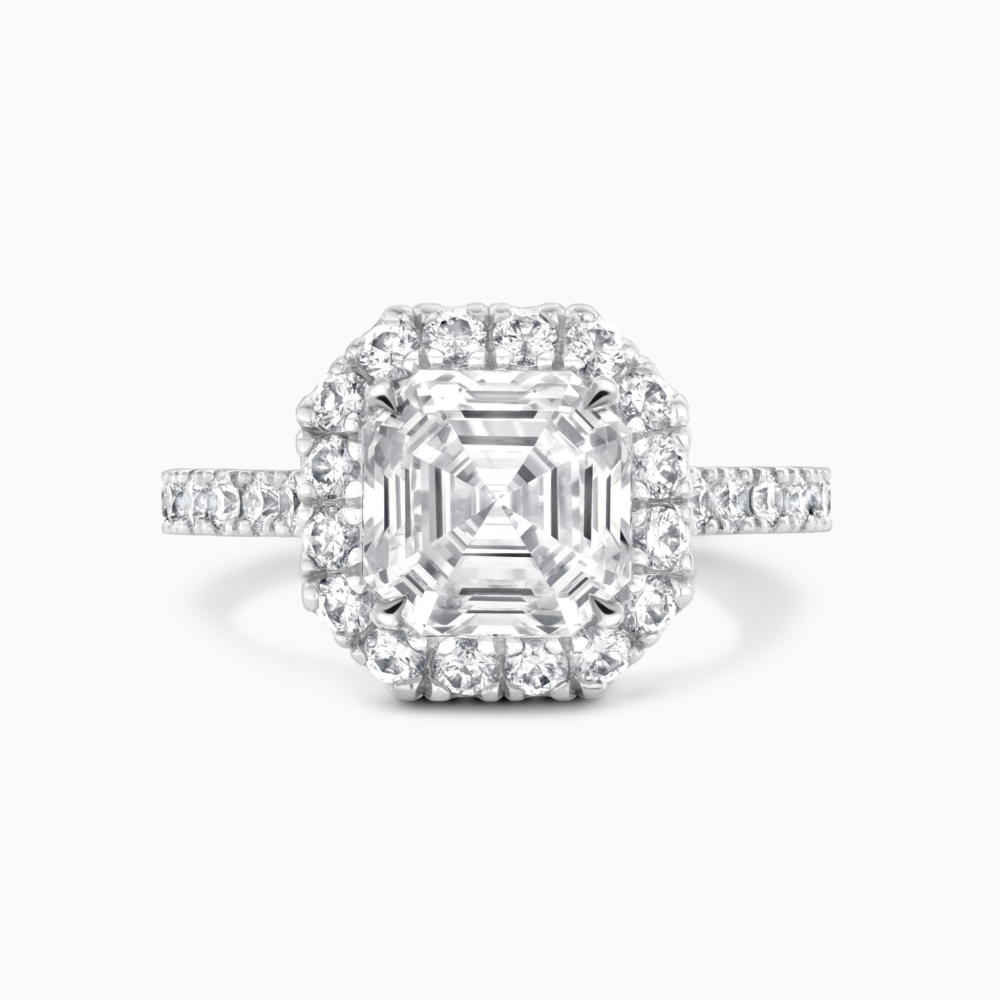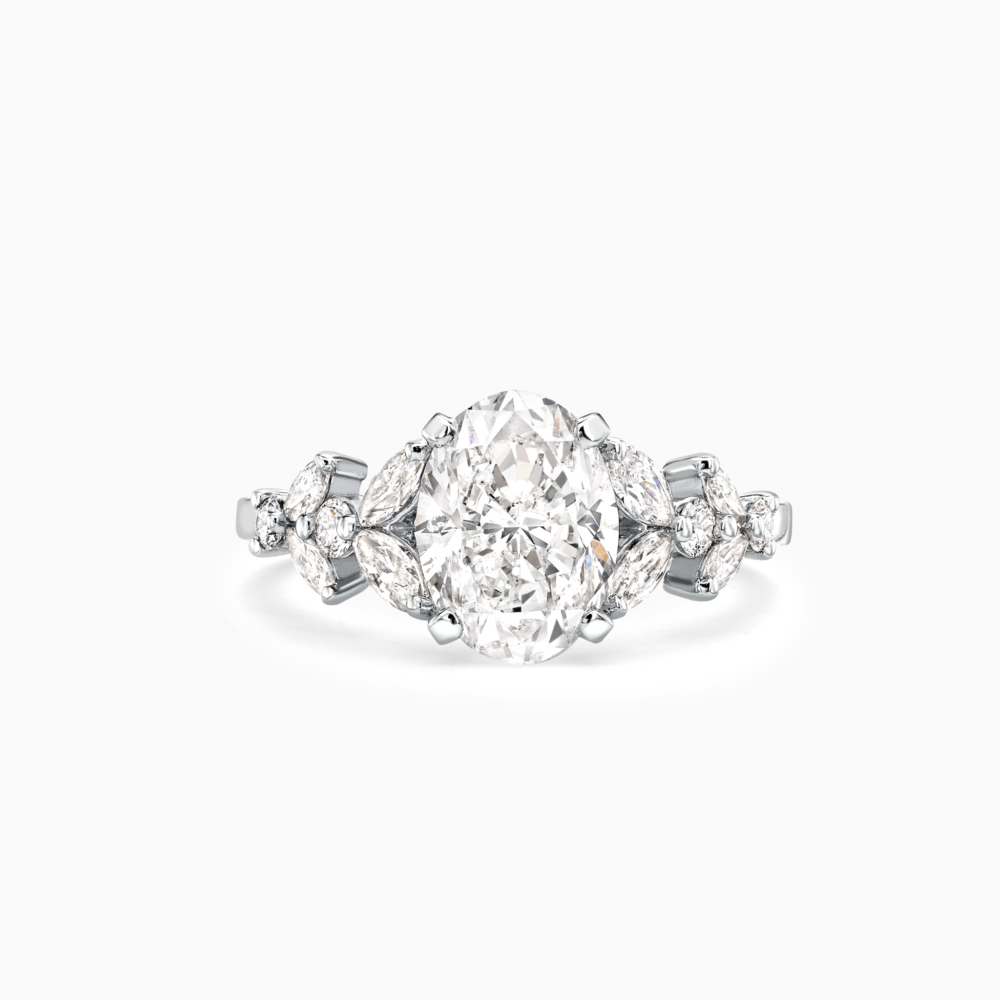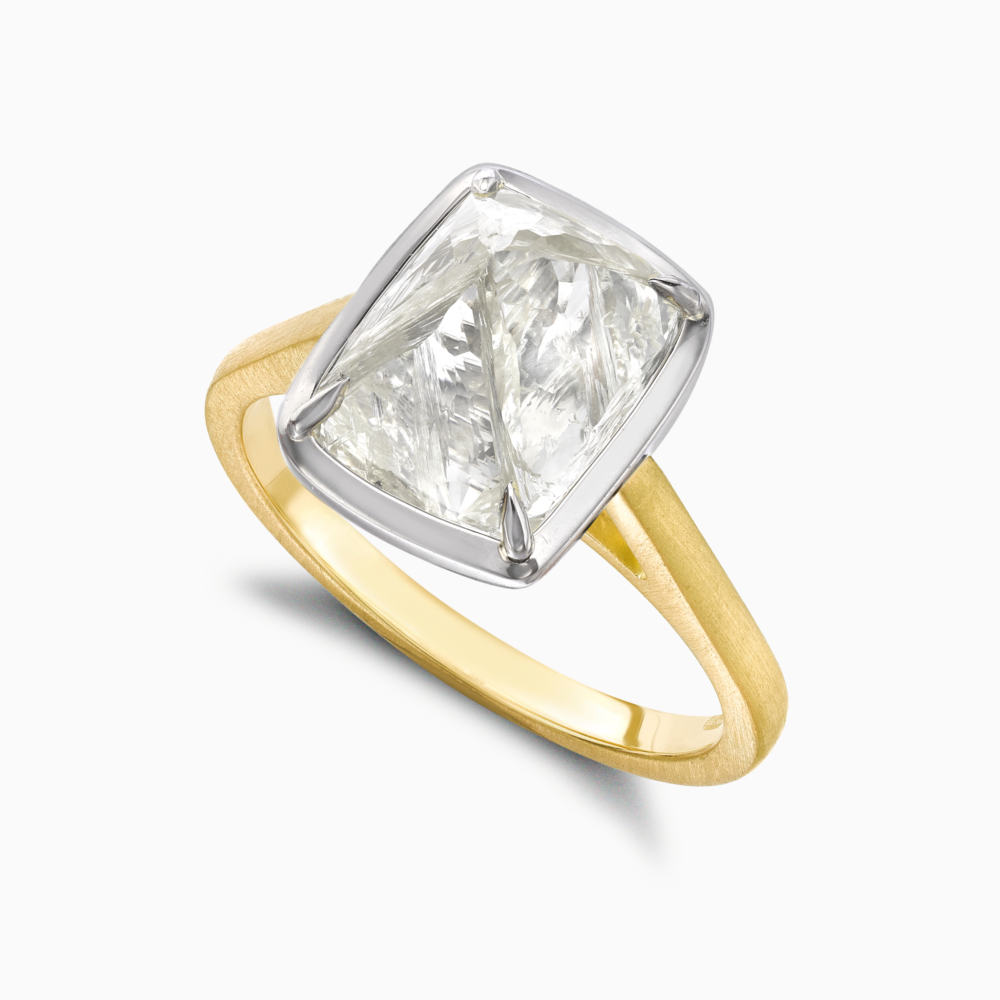November 18, 2020
How to choose the best diamond shape and cut?
The preference of the shape of a diamond is a personal one. Some people like the soft curves of an oval whilst others favour the bold lines of an emerald cut.
We're here to give you all of the facts about each of the popular shapes to help you choose the best shape diamond for your engagement ring.

Round Brilliant Cut Diamonds
Round Brilliants are the most popular shape of diamond, over 90% of rough diamonds are cut into this shape. A round brilliant cut has 57 or 58 facets (depending on whether it has a culet or not) which are triangle and kite shaped.
The culet is the flat, or pointed bit at the bottom of a diamond, a flat culet helps to prevent chipping when the diamond is set.
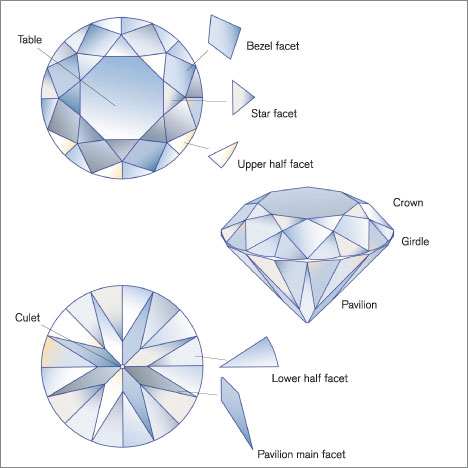
Over time, the round brilliant has been honed and perfected, with many different facet arrangements being tried and tested to achieve the best fire, brilliance and sparkle in a colourless diamond. The shape of the facets help to ensure light is reflected and refracted in the most effective way. It is important to look at the cut of a round brilliant since, a well cut round will have more brightness, fire and sparkle, than when compared to a poorly cut stone of the same colour, clarity and carat weight.

At Blackacre, we recommend our clients to opt for a modern round brilliant which has an “Excellent” or “Very Good” cut grade. Round brilliants are extremely popular for earrings, solitaire engagement rings and for using as small pavé stones.
Oval Cut Diamonds
The oval cut diamond has a long history, dating back to 1304 and the legendary Koh-i-Noor diamond. An oval has all the benefits of a round brilliant, with the same number of facets and similar placement however, due to its longer length when compared to a round stone, the proportions of an oval give the appearance of a larger stone.
In addition, the longer shape helps to elongate the finger, giving a more elegant feel. Despite the early origins of this shape, ovals have gained significant popularity in the past couple of years with celebrities favouring them for engagement rings as something classic, yet slightly different.
Learn more in our blog, here.
Cushion Cut Diamonds
The cushion cut is one of the earliest cuts of diamond, there are three different styles of cushion cuts.
The “Old Mine” cut diamond was popular from the mid 1800’s to mid-1900’s and is the predecessor to the modern brilliant cut. It was popular because it was the most efficient shape at retaining diamond rough weight whilst adding brilliance. Old Mine cuts are distinguishable for their large culets and large, if slightly uneven, facets and small tables.

Modern Cushion Brilliant Vs Old Mine Cut
The modern brilliant cushion is commonly a square shape with rounded corners. The modern cushion cut has small triangular and kite shaped facets on the crown, and kite facets arranged in a radiating pattern on the pavilion.
Cushion cut diamonds can also take on a more rectangular shape. A larger Length:Width will create a slim diamond, which has a similar outline to that of an emerald cut or oval cut. The cushion cut diamond retains more colour face-up than any other cut: which is why it is the favoured shape amongst fancy coloured diamonds.
Emerald Cut Diamonds
The emerald cut is the most popular of the step cut diamond shapes, which is actually octagonal in shape. It is named after emeralds, as it is the most popular way to cut the gemstone, due to the facets enhancing and intensifying the natural green colour of the emerald.
The emerald cut diamond has a longer length than it does width, the larger the difference is between the length and the width, the “longer and skinnier”, or “shorter and fatter” the stone will appear. Emerald cuts have large rectangular facets which act like windows, this therefore means that imperfections or inclusions within the diamond are seen more clearly than in a brilliant cut stone.
When purchasing an emerald cut diamond, it is important to ensure the diamond has good symmetry, meaning facets should be parallel to one another and corners should be cut and angled identically. The emerald cut diamond is synonymous with large important diamonds and a favourite amongst royals and high society.
Asscher Cut Diamonds
A cut made popular in the Art Deco period of the 1920’s, this square step cut diamond has large facets letting light reflect and refract through the stone to enhance brilliance.
In simple terms an asscher cut diamond is a square version of an emerald cut diamond. Asscher cut diamonds, like emerald cut diamonds, have large step cut facets which act as windows into each stone. Therefore these cuts of stone are often perceived as the most elegant due to the clean straight lines and hall of mirror style reflections. Though the asscher cut is an old one, it is surprisingly modern in its geometry.
Marquise Cut Diamonds
The marquise cut diamond is one with royal descent; the outline apparently resembled the shape of the mouth of a mistress of King Louis XV of France.
Because of its unique shape, a marquise will look larger face up than a round brilliant of the same carat weight, with the added benefit of making the wearer’s finger look longer.
When purchasing a marquise cut diamond, it is important to assess the “bow-tie” effect. Most marquise diamonds (and ovals) have this effect to some extent, if the “bow-tie” is very dark, it will take away from the beauty of the diamond.
When setting a marquise diamond, it is important to protect the pointed ends, as they can be vulnerable to chipping if left exposed. It is common to use “V” shaped prongs to protect the delicate tips.
Pear Cut Diamonds
The pear cut diamond resembles a tear drop, or leaf shape. It combines the best of a round brilliant and a marquise, however it is extremely important to ensure symmetry as a slight deviation can detract from the appealing outline. If a pear shape is worn as an engagement ring, it is best to wear the point facing down to the tip of the finger to make the finger appear more slender.
The point of a pear is the weakest part of a pear shape, as it is the smallest and thinnest section, so it is important to make sure there are no large inclusions in this area which could harm the integrity of the diamond. With pear shapes, it is important to view multiple diamonds of a similar carat weight as some diamonds can be wider, and some slimmer than others. The shape of a pear is very much personal preference on which to choose.
Radiant Cut Diamonds
A radiant cut is an octagonal shaped diamond, with brilliant (kite and triangle shaped) facets. The radiant cut is an underdog, it’s not as popular as it’s step cut faceted cousin, the emerald cut, yet it packs a punch. Radiants look great as engagement rings with trapezoid shaped side stones.
When purchasing a radiant cut diamond, it is important to note that the sides are parallel to one another, the cropped corners are equal in angle and size, and that the culet is well centred.
The facets on a radiant allow inclusions to be hidden easily whilst producing an incredible amount of sparkle. Like emerald cuts, radiants can be either elongated or short depending on their Length:Width ratio.

Princess Cut Diamonds
The princess cut diamond is a square shaped diamond with brilliant shaped facets. The princess cut was created in the 1960's and has quickly risen in popularity. It's 76 facets create more dispersion than other square cut diamonds whilst the sharp, parallel sides make them popular in jewellery styles where the stones are set closely to each other. A princess cut diamonds' shape ensures that there are no gaps between them, unlike round stones; they are popular in channel set eternity rings.
If choosing a princess cut diamond for an engagement ring, ensure a setting which helps to protect the corners. The proportions of this square brilliant cut can make the wearer’s finger look shorter, so look great on long slender hands.
Alternative Cuts
And then there’s those cuts which are not in the “normal” category. There’s the trillion, heart, shield, kite, half moon, hexagon, horse head, and essentially any shape you wish to cut a diamond into.
The demand for unusual shapes like the kite and shield are on the rise, with a lot of brides having a bigger say in the engagement ring design process.
At Blackacre, we have access to a world-wide network of diamonds, helping you find the perfect stone for your engagement ring or piece of jewellery.
When considering which shape of stone to choose, it is important to think about what kind of ring you would like to design around it, whether the shape of the stone should sit in a halo or stand out on its own in a solitaire ring.
If you would like more information or guidance on diamond shapes, please don't hesitate to contact us.


